Unique Backstories to Sydney’s YHAs
Each Sydney YHA is “unique in their own way” says Jennifer from Sydney Central YHA. Not only are they unique, they are all steeped in history.
After spending a night in all three hostels, and doing a bit of research besides, I’ve discovered more about the rich past of each heritage site.
Sydney Harbour YHA
While Sydney Harbour YHA which opened in 2009, is the newest building, the site’s history dates back to 1795. The multi-award-winning three-storey YHA is built on stilts to limit the impact on the archaeological heritage site beneath it.
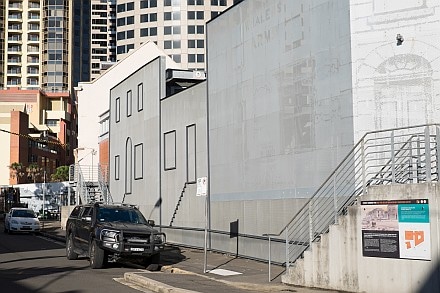
The Big Dig
Archaeological excavations revealed the foundations of early homes, hotels, a bakery and an abattoir as well as uncovering over a million artefacts. My guide, Alison Frappell, explains how the physical evidence together with oral history and historical records all contributed to the understanding of how the residents lived.

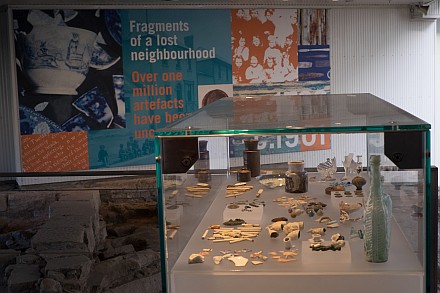
When I use the word ‘slum’ to describe the area, Frappell looks frustrated. She tells me that found items reveal that people who lived here in the 1800s had a better lifestyle and were more prosperous than first thought.
Little buttons, clay pipes smoked by the women of the day, foreign coins and broken ceramics from China and Japan, toys and even part of a large tea pot are carefully displayed alongside the sandstone outlines of cottage walls.


Frappell relates the story of Richard Byrne, an Irish rebel and stonemason who lived here with his large family in a little weatherboard cottage. Then there was George Cribb, after whom Cribb Lane is named, the local butcher who ran an illegal still.
The Site in the 1900s
After the homes were demolished in the early 1900s, large warehouses were built, the concrete footings still visible. Later the site was used as a bus depot and more recently as a car park.
Sydney Harbour YHA Today
Today, Sydney Harbour YHA in the Rocks shares the knowledge of Sydney’s recent history through their on-site education centre, tours and interpretation signage.

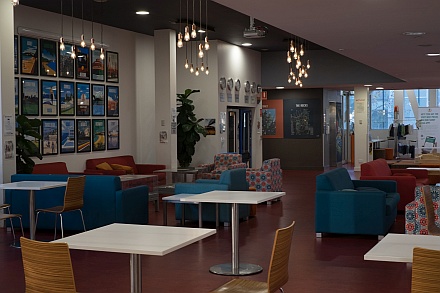
Railway Square YHA
You could be forgiven for thinking that the shed-like structure housing the Railway Square YHA is a new building, clad as it is in shiny silver corrugated iron. I suppose you’d be partly right. The hostel itself opened in 2004.

The Inwards Parcel Shed
However, from 1904 the building was the ‘Inwards Parcel Shed’, a clearing house for parcels. Next door, the Parcels Post Office (now the Adina Hotel) was constructed in 1910.
People would buy goods from the nearby department stores of Grace Bros (now Broadway shopping Centre), Marcus Clark (now home to Sydney TAFE) and Mark Foys (now Downing Centre), parcel them up and mail them to relatives in the country from the Parcel Post Office.


Original Features
The original building was a corrugated iron shed supported by a timber structure. Fibreglass skylights provided natural lighting. That explains the skylight in my room.
Dean, the manager, explains that all the ‘purple beams’ are original Canadian hardwood.

While the interior is decidedly modern and has a lovely relaxed feel, a closer look reveals the ties that the building has to early rail history. There’s original signage and two well-worn parcel trolleys rest unused outside the front door. Huge sliding wooden doors stand open on either side of the new glass entrance.
Sleep in a Train Carriage
Two train carriages, fitted out to sleep four or eight, stand permanently at Central Station’s Platform 0. These specially insulated (for sound) replica carriages were built by the same Italians who made the original carriages. A careful look underneath them reveals the original train tracks.


Railway Square YHA may disguise its history, but there’s plenty to discover if you scratch the surface.
Note: The Railway YHA will close sometime in 2021 (date to be determined) to allow development over the site. It will open again in 2025. The Inwards Parcels Shed will be dismantled, bolt by bolt, and re-assembled in exactly the same spot!
Inside Railway Square YHA

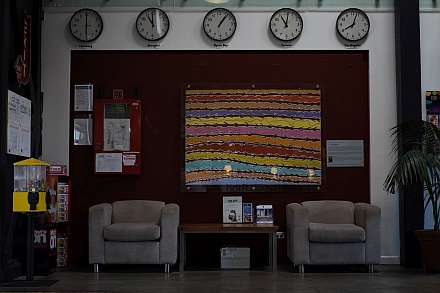
Sydney Central YHA
Opened in 1996, Sydney Central YHA is the oldest of the three. Alfred Daking-Smith, a merchant, bought the land on which the building stands in 1908 for the considerable amount (in those days) of £25,000. He built Daking House in 1913 at a cost of around £50,000.

Daking House
Variously described as ‘Chicagoesque’ and ‘Commercial Palazzo style’ architecture, Daking House stands nine storeys tall. Originally the projecting concrete cornice was the largest in Sydney but was cut back in later years.
The half barrel vault portico, a later addition with a white pressed metal ceiling, covers the sandstone entrance.

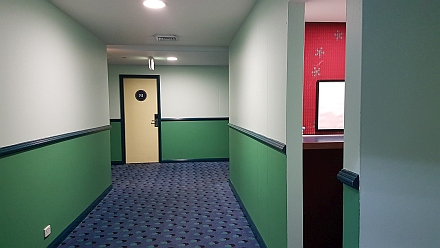
A commercial building, Daking House housed a mix of businesses and professional tenants. Lowes Outfitters occupied the ground floor up until 1948. The following year, the Rural Bank moved into the ground floor and basement.
Location for a Detective Novel
At one time, a Detective Agency had an office in Rawson Chambers next to Daking House.
Silke Kerwick from the YHA points me to Tara Moss’s latest detective novel, Dead Man Switch. Set in the 1940s, Private Investigator Billie Walker has her office in Daking House.
The book’s researcher stayed at the YHA trawling historical documents to ensure accuracy in descriptions of the building. Reading Dead Man Switch encouraged me to closely inspect the outside structure of the building and imagine Billie standing at the corner balcony of her sixth-floor office planning her next move.

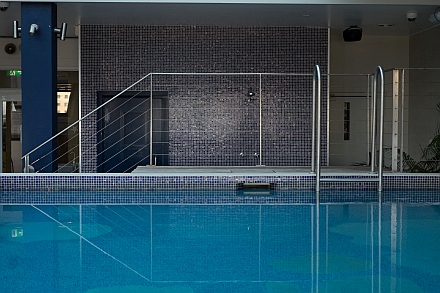
As I go up in the lift to my fourth-floor room I kind of wish it was still one of those old-fashioned ones with a metal sliding gate and lift operator.
A Hint of Past Lives
Today, only the signage at the entrance, and external architectural features, hint at the stories hidden within the structure of Daking House.
Sydney’s YHAs have Unique Histories
I walked past the three Sydney YHAs many times before actually staying there, never knowing anything about their backstories. It’s been fascinating learning more about Sydney’s history by delving into the stories of these three heritage sites.
Useful Information
- The best way to make sense of The Big Dig site at the Sydney Harbour YHA is to join one of the free tours offered to hostel guests. Non-guests or those who can’t make the Monday morning tours can do a self-guided tour during daylight hours using the interpretation panels on the ground floor.
- Find out more about Sydney Harbour YHA here.
- Find out more about Railway Square YHA here.
- Find out more about Sydney Central YHA here.
Note: I was a guest of the YHA

Lovely that they saved and display artifacts from early days of the area where Sydney Harbor YHA now stands. The Railway Square YHA has done a great job to incorporate the railway theme and I like the Sydney Central YHA building.
Thanks Bernadette for your thoughtful reading. I enjoyed inspecting the artefacts and exploring the different sides of the YHAs.
Thanks Joanne, I always enjoy your informative articles. Many of these places we have passed a hundred times without noticing.
Stay Safe and well. Best regards Russell Drysdale.
I’m glad you enjoy them, Russell. And you stay safe too. They’re strange times.
Very interesting and so good to find out things that were unknown to me in the past.Keep up the good work Joanne and always look forward to your journeys
Thanks Benjamin, I think that’s what I like best – seeing places in a new light given what I’ve discovered about them. And then of course, sharing what I’ve found out.
Thanks Jo, for a fascinating article… maybe you could follow it up with a description of what it’s like to stay in a Youth Hostel for those of us oldies who have never been brave enough to do so!
Hi Mandi and thanks. I’m thinking about comparing the three stays. In short, hostels have changed and certainly the YHA usually has double en-suite accommodation which makes it easier for those of us who have a Senior Card…..